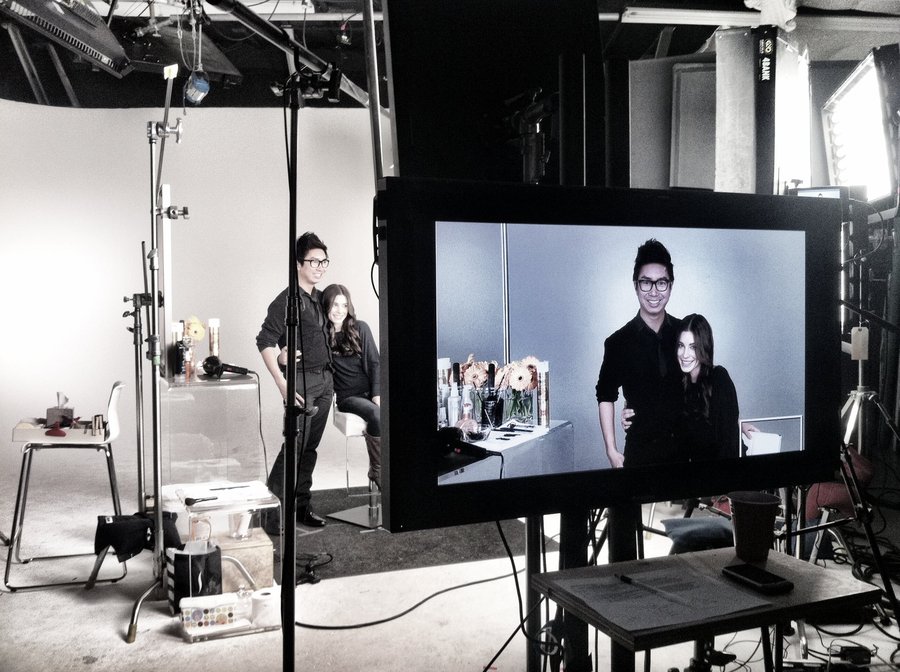Your cart is currently empty!

Using Video for SEO
In general, I’m not a great audience for video. I like to control the speed at which I get information, I’m not a visual processor, and I’m easily bored. As a consumer, I just skip videos. As a content writer, I look for ways to let the search engines in on the content of videos, and otherwise leave them to the people who are good with them. As a web strategy advisor, of course, I have lots to say on the subject.
As an example, I’m going to use Scissorboy’s Cutting Edge Hairshowvideo on basic blow-dry skills. If you happen to be a hairstylist, you’ll find this 15 minute video stuffed with useful information. If you’re looking to learn how to make your website work better for your business, that’s all just lagniappe, because Scissorboy is an excellent example of using video for the purpose.
Let me give you some advice on how to use videos well, from the point of view of the hard-to-please video viewer:
- Stand out for excellent production quality. Scissorboy’s series is more like a mainstream TV program than like your cousin holding a camcorder for you. Now, plenty of people have had great online success with their cousin’s camcorder work, so if that’s what you’ve got the budget for, you can still use video. Just make sure to set things up so that the choppy quality looks like an intentional part of your story. Personally, I’d pay for a top-quality 30 seconds of intro, to which I could then attach a whole series of lower-budget stuff, thus implying that I could have made the whole thing slick looking but that for artistic reasons I chose to go in another direction.
- Insist on excellent content. Scissorboy’s 15 minutes on blow drying offers not only blow dry techniques, but health information (carpal tunnel syndrome is an issue for hairstylists, I now know), suggestions for training an assistant, reminders about customer care, and product information for Monroe hairbrushes. If I were the hairbrush maker, I’d happily sponsor the video, but if I were a stylist, I would never feel that I was watching an ad. In fact, I’d gather my colleagues together and watch the episode (probably with popcorn) and discuss it as a professional development moment. As a cranky consumer of videos, I especially appreciate the fact that there’s no wasted time — every minute contains useful content.
- Use text. If Scissorboy were a client of mine, I’d probably be telling him to add some text on the page, but he is using Twitter to full advantage. He’s also using text within the video to emphasize and organize the information — good for distractable viewers like me, and also for those salon-wide professional development sessions I’m imagining. I’d take the text from this video and make an outline of it, and post that along with a quick description of the content on the web page, for the search engines of course, but also to encourage casual visitors to subscribe by giving them a preview of the value of my video.
- Include a call to action. There has to be some obvious action your viewer ought to take after seeing your video. If you want visitors to sign up, subscribe, email a link to a few hundred of their closest friends, or embed your video on their facebook pages, say so. Make it easy, too — put a nice, large imperative statement telling your visitors what action you’d like them to take in a spot where they are most likely to notice it. If your video carries the viewer outside your website — to YouTube, say — then you need some very good way to get them back. I’ve seen people during user testing of websites sitting helplessly staring at the screen, and that’s never a good thing. If nothing else, use the words “After watching the video, use your back button to return to this website” before you send them away.
My thanks to Scissorboy for helping me avoid dissecting my clients’ videos here.
by
Tags:
Comments
3 responses to “Using Video for SEO”
This doesn’t address the impact of video on a page’s ranking whatsoever.
Having good content which is recognizable to the search engines (thus, you need some text) and which provides a good experience for visitors so they’re likely to link will naturally increase rankings.
Here’s more on how search engines “perceive” video: http://blog.rebeccahaden.com/2009/04/videos-as-content-on-your-website.html
And a roundtable discussion on the subject: http://www.seroundtable.com/archives/018008.html
Not as readable, but with more technical detail.
Thank you for bringing up this point!
I will give those both a look. I appreciate your reply.

Leave a Reply